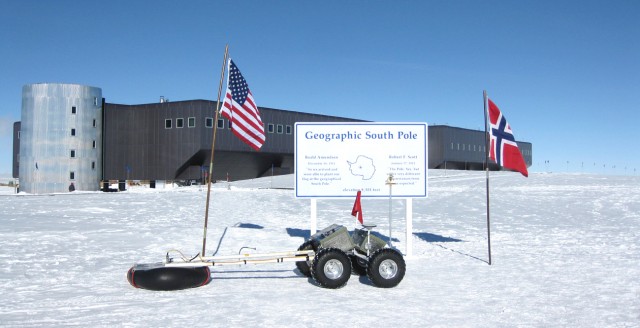Meet Yeti, the South Pole’s crevasse-detecting robot
Ars Technica » Scientific Method 2013-03-15

Continental glaciers are interesting for all kinds of reasons. Ask the National Science Foundation, and it will likely tell you that drilling into the Greenland ice sheet can tell us a great deal about the Earth's climate 100,000 or more years ago. Or perhaps it will point to the Antarctic ice sheet, an excellent medium for the detection of high-energy neutrinos. The ice sheets of Greenland and Antarctica are of enormous scientific value to climate scientists, life scientists, and cosmologists alike.
But for those in the field, life can be difficult and dangerous. This is especially true for those who resupply polar research stations. Due to budgetary constraints, the NSF's policy is now to resupply by land rather than by air. On land, an ever-present danger is posed by crevasses: rents in the ice sheet up to 60 meters deep and 9 meters across—big enough, at their widest, to swallow a supply-towing tractor whole. New crevasses are formed by movements in the ice sheet, but they can be hidden from view by fresh snowfall. That snow can bridge the gap, but it's incapable of supporting a supply vehicle's weight.
For about 20 years, the solution to this problem has been to manually survey for crevasses with ground-penetrating radar (GPR). A radar antenna, often housed in an inner tube, is pushed along on a 6-meter boom by a PistenBully or some such vehicular beast of burden at the head of the traverse. Alongside the driver rides a GPR operator who monitors real-time scrolling radar images, looking for the tell-tale signature of a crevasse. "If a crevasse is detected, the operator has about two seconds to stop the tractor before it crosses," Laura Ray, Professor of Engineering at Dartmouth, explained to Ars. If a crevasse is found, it is probed to see if it is passable. If it is not, the crevasse can be blasted and filled, or an alternative route can be found.
Read 11 remaining paragraphs | Comments